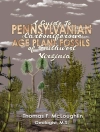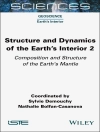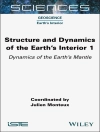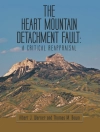Mechanical properties and fluid transport in rocks are intimately linked as deformation of a solid rock matrix immediately affects the pore space and permeability. The coupling of fluid circulation and deformation processes in crustal rocks results in significant complexity of the mechanical and fluid transport behavior. This often poses severe technical and economic problems for reservoir and geotechnical engineering projects involved in oil and gas production, CO2 sequestration, mining and underground waste disposal. The volume results from the 5th Euroconference on Rock Physics and Geomechanics, which was held in Potsdam, Germany in September 2004.
Part I of the topical volume mainly contains contributions investigating the nucleation and evolution of crack damage in rocks, new or modified techniques to measure rock fracture toughness and a discussion of upscaling techniques relating mechanical and fluid transport behavior in rocks at different spatial scales.
Part II contains contributions discussing fluid flow and transport in rocks as observed on the laboratory scale and in boreholes. The evolution of rock damage pertinent to the stability of underground excavations is studied and scaling relations of elastic properties and seismic events are discussed.
Innehållsförteckning
Rock Damage and Fluid Transport, Part II.- Short-Timescale Chemo-Mechanical Effects and their Influence on the Transport Properties of Fractured Rock.- Permeability Evolution During Non-linear Viscous Creep of Calcite Rocks.- Experimental Investigation into the Scale Dependence of Fluid Transport in Heterogeneous Rocks.- Determination of Porosity and Permeability out of Dispersion Analyses of Borehole Wall Displacements.- Fluid Pressure Variation in a Sedimentary Geothermal Reservoir in the North German Basin: Case Study Groß Schönebeck.- Characterisation of Tensile Damage in Rock Samples Induced by Different Stress Paths.- Monitoring Fracture Propagation in a Soft Rock (Neapolitan Tuff) Using Acoustic Emissions and Digital Images.- Understanding the Seismic Velocity Structure of Campi Flegrei Caldera (Italy): From the Laboratory to the Field Scale.- Spatial Scaling of Effective Modulus and Correlation of Deformation Near the Critical Point of Fracturing.- Analysis of Temporal Structures of Seismic Events on Different Scale Levels.











